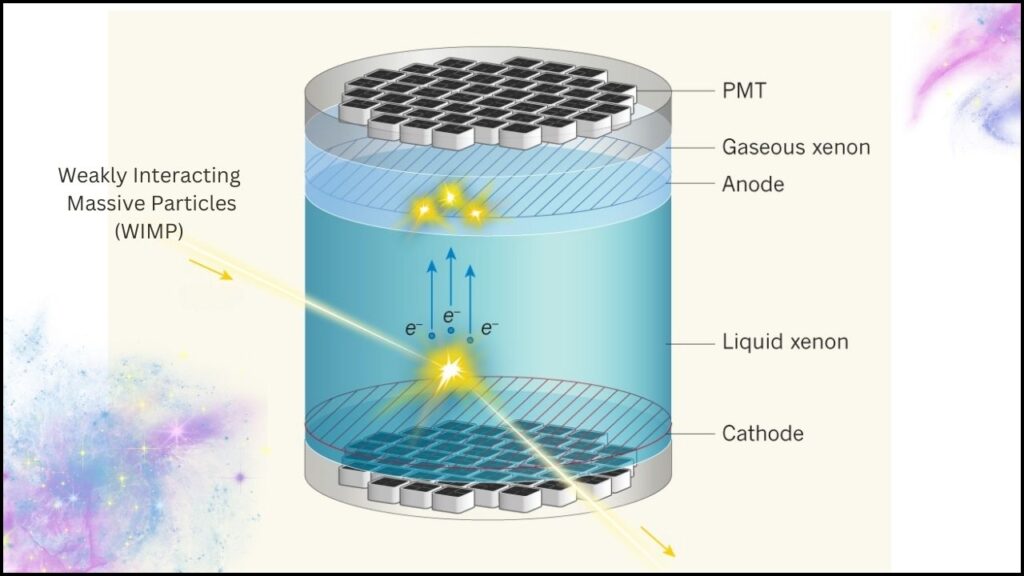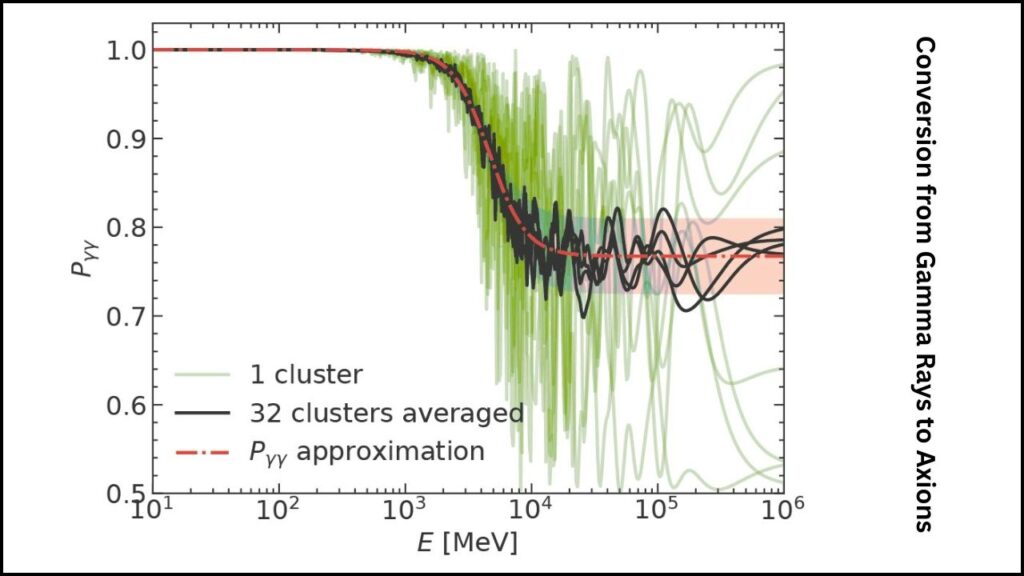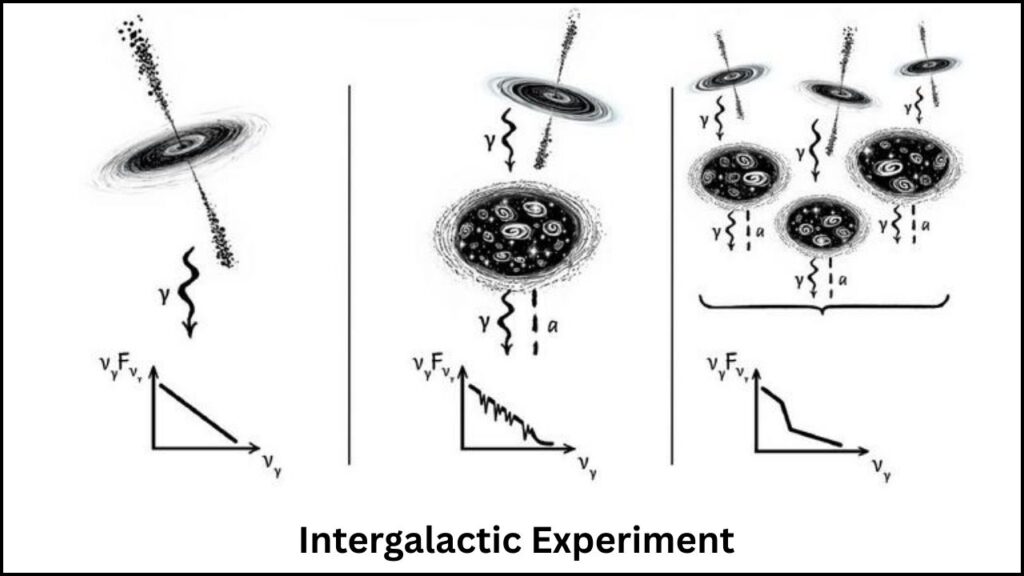Dark matter is one of the biggest mysteries in science today. Although it makes up about 80% of all the matter in the universe, it’s invisible and incredibly hard to detect. Until now, scientists have been trying to find dark matter using particle detectors underground or in space, but a new intergalactic experiment is changing the game entirely. This exciting project cleverly uses the universe itself as a tool to catch dark matter particles, and the approach is unlike anything ever tried before.

Understanding this breakthrough is important because it opens a fresh path in the search for dark matter, which could reshape how we understand the cosmos. Here’s what you need to know about this innovative experiment, how it works, why it matters, and what it means for the future of science.
Table of Contents
Scientists Launch Intergalactic Experiment to Snag Dark Matter
| Topic | Details |
|---|---|
| What Is Dark Matter? | Invisible matter making up ~80% of the universe’s mass, detectable only through gravity. |
| New Experiment Method | Uses magnetic fields of galaxy clusters and light from distant black holes. |
| Main Dark Matter Candidate | The axion, a hypothetical particle detectable by its effect on electromagnetic waves. |
| Why It’s Unique | The experiment uses the entire universe as a natural particle detector. |
| Other Innovations | Space-based tests using levitated materials to detect “dark wind” particles. |
| Career & Research Links | Leading institutions involved include the University of Copenhagen and Southampton University. |
| Official Website | University of Copenhagen News |
The launch of this intergalactic experiment is a thrilling leap forward in the search for dark matter. By ingeniously using the universe’s own magnetic fields and cosmic radiation, scientists are pioneering a new frontier in particle physics. Alongside other innovative methods involving atomic clocks, underground detectors, and space-based systems, this approach pushes the boundaries of what’s possible.
While the experiment is complex and nuanced, the potential payoff — finally unraveling the secrets of dark matter — is extraordinary. As we watch the universe help us uncover itself, this journey reminds us how creative science can bridge the smallest particles with the grandest cosmic phenomena.
What is Dark Matter and Why Does it Matter?
Dark matter is a invisible type of matter that does not emit, absorb, or reflect light, making it impossible to see directly. Scientists know it exists because of the way it affects the movement of stars and galaxies. Without dark matter’s extra gravity, galaxies would fly apart. Yet, despite decades of effort, no telescope or detector on Earth has directly identified dark matter particles.
The hunt for dark matter is crucial because understanding what it is will answer fundamental questions about how our universe was formed and how it continues to evolve. Some ideas guess dark matter is made up of new particles like WIMPs (weakly interacting massive particles) or axions.

Of these, axions are a prime suspect because they might solve several issues in physics at once.

How the Intergalactic Experiment Works
Scientists have traditionally built huge underground detectors or used satellites to try capturing rare interactions of dark matter particles with normal matter. However, these methods have so far come up empty-handed.
The new experiment breaks this pattern by using large-scale cosmic phenomena as a natural laboratory. The researchers turned their gaze to distant galaxy clusters, which have enormous magnetic fields stretched across millions of light-years. These fields can influence light and particles traveling through them.

Specifically, the scientists observe “electromagnetic radiation” (which includes visible light and other wavelengths) emitted from distant black holes at the cores of bright galaxies. As this radiation travels through the magnetic fields of galaxy clusters, some of the photons (light particles) may convert into axions, or vice versa.
Detecting this tiny conversion involves looking for very subtle changes or fluctuations in the light signals from these cosmic sources that would only happen if axions are present. While the effect is extremely faint, the vast scale of space and the sensitivity of instruments around the world help amplify the chances of noticing these clues.
Practical Steps in the Experiment
- Identify powerful cosmic sources: Scientists select very bright galaxies with supermassive black holes emitting steady electromagnetic waves.
- Map the galaxy clusters’ magnetic fields: Understanding where and how strong the magnetic fields are along the light’s path is essential.
- Gather data using telescopes and detectors: Using advanced space and ground telescopes, they collect detailed spectra and monitor fluctuations over time.
- Analyze signal fluctuations: Sophisticated algorithms search for the expected signature changes that could point to axion conversions.
- Cross-check with models: Scientists compare the findings with theoretical models to confirm or rule out axions as the cause.
This approach treats the universe like one gigantic particle detector, something never done before with dark matter searches.
Other Cutting-Edge Dark Matter Detection Techniques
While the intergalactic method is exciting, it’s part of a broader arsenal of techniques aiming to find dark matter:
- Atomic clocks and lasers: Researchers have designed ultrasensitive detectors using networks of atomic clocks and stable lasers connected by fiber optics to detect tiny oscillations caused by dark matter waves affecting time measurements across distances.
- Large underground detectors: Facilities like the DEAP-3600 in Canada use tons of liquid argon to spot faint dark matter particle interactions deep underground, benefiting from low background noise.
- Space-based detectors: Projects from universities such as Southampton aim to detect hypothetical “dark winds” by levitating sensitive materials in zero-gravity conditions.
- Cryogenic detectors: Cryogenically cooled crystals offer extremely sensitive measurements to detect weak dark matter particles.
- Advanced algorithms and machine learning: New AI models improve the analysis of huge experimental data, helping distinguish possible dark matter signals from noise.
Why This Matters for Science and Humanity
Detecting dark matter would revolutionize physics and cosmology. It would:
- Confirm the existence of new particles beyond the Standard Model of particle physics.
- Help explain galaxy formation and the large-scale structure of the universe.
- Open the door to potential new technologies inspired by the fundamental forces and particles of the cosmos.
- Inspire new careers and research in astrophysics, particle physics, and space technology.
For professionals in science or technology careers, understanding these advances helps stay at the forefront of innovation and nurtures collaboration opportunities in cutting-edge projects.
Dark Matter Breakthrough: Scientists Might Finally Detect It With This Strange Quantum Trick
Physicists Zero In on a Fifth Force That Could Reveal What Dark Matter Really Is
Scientists Use a Levitating Magnet to Search for Dark Matter — And It Might Actually Work
FAQs About Scientists Launch Intergalactic Experiment to Snag Dark Matter
What exactly is the “axion” in dark matter research?
The axion is a theoretical, very light particle that could make up dark matter. It interacts extremely weakly with normal matter, and may convert into photons in magnetic fields, making it detectable in experiments.
How do magnetic fields help find dark matter?
Certain dark matter particles like axions can convert to photons when passing through strong magnetic fields. Observing light changes in cosmic magnetic fields can reveal axions.
Why can’t we detect dark matter on Earth easily?
Dark matter interacts very weakly with regular matter and light, so detectors on Earth find it challenging to catch direct interactions. Background signals on Earth can also drown out the faint dark matter signals.
How is using the universe itself better than Earth experiments?
The universe provides gigantic natural magnetic fields and vast distances that can amplify or reveal interactions we cannot replicate on Earth. It also lets us observe effects over huge scales and times.



















